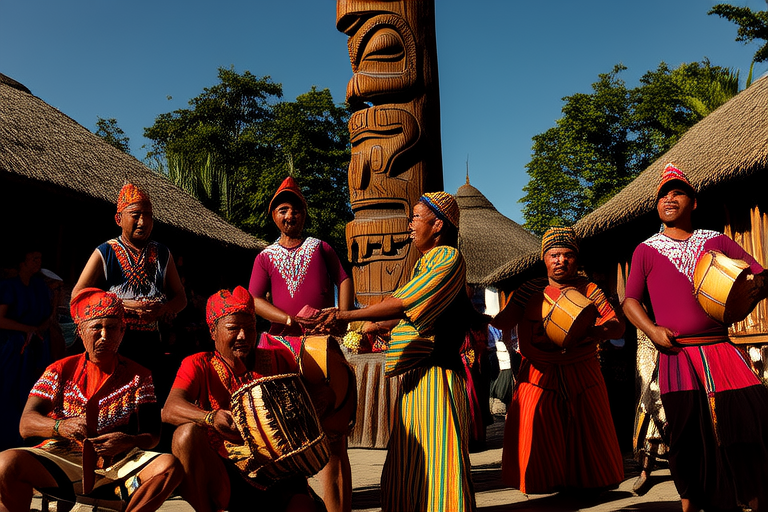Exploring Cultural Customs: Traditions That Bind Communities Together

Exploring Cultural Customs: Traditions That Bind Communities Together
Cultural customs and traditions are the threads that weave together the fabric of human society. These practices, passed down through generations, serve as both a means of preserving identity and fostering unity within communities. They provide a sense of belonging, continuity, and shared purpose that can transcend individual differences. In an increasingly globalized world, understanding the role of cultural customs in building strong, cohesive communities is more important than ever.
The Significance of Cultural Customs
Cultural customs and traditions are deeply rooted in the history and values of a people. They reflect the collective experiences, beliefs, and aspirations of a community, serving as a living testament to its resilience and creativity. Whether through religious festivals, local ceremonies, or communal gatherings, these practices bring people together, reinforcing bonds and promoting social cohesion. By participating in these events, individuals not only reaffirm their connection to their heritage but also learn about the shared values and histories that define their community.
One notable example of this is the annual Diwali festival celebrated by Hindus worldwide. Known as the “Festival of Lights,” Diwali symbolizes the victory of light over darkness and good over evil. Families come together to light oil lamps, exchange gifts, and share meals, creating a sense of warmth and unity. Another example is the Day of the Dead (Día de los Muertos) observed in Mexico and other Latin American countries. This vibrant celebration honors deceased loved ones through parades, altars adorned with flowers and photographs, and feasts, fostering a deep sense of continuity between the living and the dead.
Traditional Practices and Social Cohesion
Traditional practices play a crucial role in maintaining social cohesion within communities. They offer opportunities for individuals to engage in collective activities, share experiences, and strengthen relationships. For instance, the harvest festival of Thanksgiving in North America brings families and friends together to give thanks for the year’s bounty and celebrate the spirit of generosity. Similarly, the Lantern Festival in China marks the end of the lunar new year celebrations with lantern displays, dragon dances, and fireworks, uniting people in joyous festivities.
In addition to promoting social cohesion, cultural customs facilitate the transfer of intergenerational knowledge. Elders often pass down valuable skills, stories, and wisdom to younger members of the community during these events. In Japan, the tea ceremony is not merely a ritual but also a profound teaching tool. Participants learn about etiquette, mindfulness, and respect for tradition, ensuring that these values are preserved for future generations.
Challenges Posed by Modernization and Globalization
Despite their many benefits, cultural customs face significant challenges in the face of modernization and globalization. As societies become more interconnected, there is a risk that unique traditions may be overshadowed or forgotten. Urbanization, economic pressures, and the influence of mass media can erode the cultural practices that once defined a community. However, many individuals and groups are actively working to preserve and revitalize their cultural heritage.
For example, the Maori people of New Zealand have made great strides in revitalizing their language and customs. Through initiatives like Te Reo Maori immersion schools and cultural centers, they are ensuring that their language and traditions continue to thrive. In India, efforts to protect the endangered art of puppetry have led to the establishment of workshops and festivals dedicated to this ancient craft. These efforts demonstrate the power of community-driven initiatives in safeguarding cultural practices.
Respecting and Celebrating Diverse Cultural Traditions
The preservation and celebration of diverse cultural traditions are essential for promoting understanding and unity across different societies. By recognizing and valuing the richness of various customs, we can foster greater empathy and respect among people from different backgrounds. Education plays a pivotal role in this process, helping to raise awareness about the importance of cultural heritage and encouraging its transmission to future generations.
Schools and universities can incorporate lessons on cultural diversity into their curricula, exposing students to the wide array of traditions that exist around the world. Museums and cultural institutions can host exhibitions and events that highlight lesser-known practices, providing platforms for underrepresented communities to share their stories. Media outlets can also play a part by showcasing positive representations of cultural traditions, challenging stereotypes and promoting cross-cultural dialogue.
In conclusion, cultural customs and traditions are invaluable assets that bind communities together. They serve as a source of identity, continuity, and shared purpose, contributing to social cohesion and intergenerational knowledge transfer. While modernization and globalization present challenges to these practices, there are numerous examples of successful efforts to preserve and revitalize cultural heritage. By respecting and celebrating diverse cultural traditions, we can build bridges between different societies and promote a more inclusive and harmonious world.